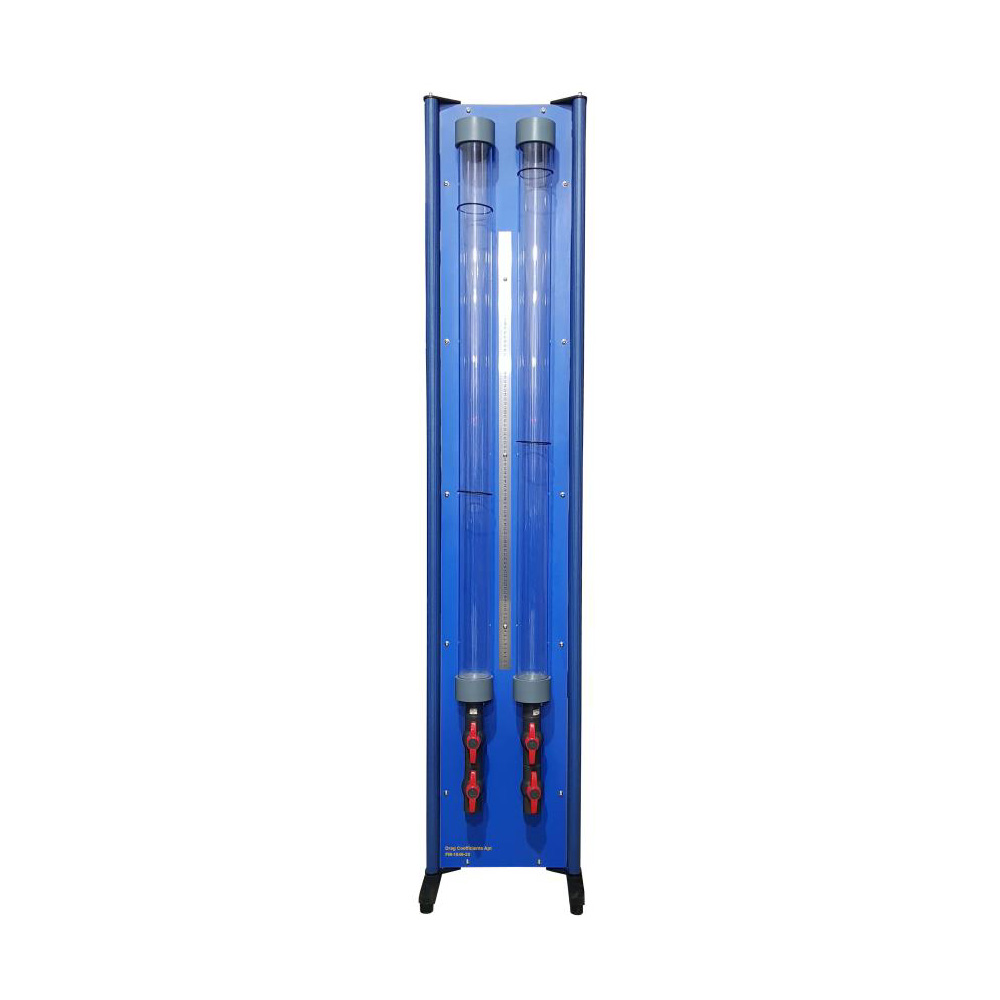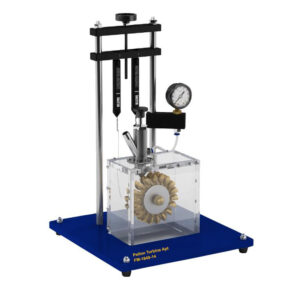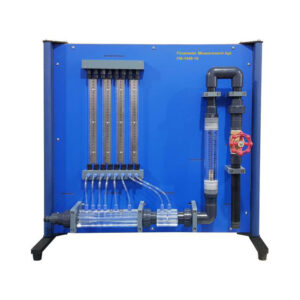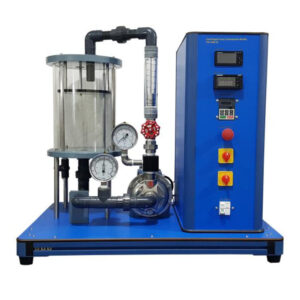Two transparent cylinders are provided for performing the experiment, these are filled with fluids of varying viscosity. A ball sinks to the bottom under the action of gravity. The sink time and distance are measured. Included with the unit are a stopwatch and spheres of different materials and volumes. At the bottom of the measuring tube is a chamber through which the balls can be removed without major loss of fluid. This apparatus has been designed for students experiments on the behavior of particle-fluid systems. The unit comes with two tubes mounted vertically. Students shall be able to study the relationship between the drag coefficients of falling particles and their Reynold’s number value. The unit is also supplied with particles of various shapes, sizes and densities and during the experiments students shall allow single particles to fall through different liquids contained in vertical glass tubes. During the experiments, students shall measure the falling rate of the particles by timing their passage between two marks on the walls of the tubes. Blockage effects are minimal as the largest particle used has a projected area of only a fraction of the tube cross-section. Particles can then be removed from the bottom of the tubes without the necessity of draining the liquid. Particles of spherical shape each quantity two are supplied to allow a comparison to be made between their drag coefficients. The equipment consists essentially of two acrylic tubes 1.08m long mounted vertically on a backboard. A guide is provided at the top of each tube to introduce the particles with the minimum disturbance to the liquid. The particles are removed with the minimum loss of liquid by means of valve device fitted at the bottom of each tube.
Experiments
- Determine sink, velocity of different spheres.
- Determination of drag coefficients of spherical objects over a wide range of Reynolds’ number.
- To study the effects of boundary layer separation on motion of spherical objects.
- To study the effect of particle shape on the falling rates and drag coefficients.
- Dimensional analysis and dynamic similarity.
Specifications
A simple apparatus designed for students experiments on the behavior of fluid-particle characteristics.
i) Glass/Transparent Plexiglas Tubes:
- Material: Plexiglas
- Thickness: 3mm
- Length: 1.08m
- D.: 74mm
- D.: 68mm
ii) Hydrometers (optional):
- Range : 0.7 to 2.0 g/ml, 0.1
Spheres
- Aluminium OD approx: 10mm
- Aluminium OD approx: 5mm
- POM (Delrin) OD approx: 10mm
- POM (Delrin) OD approx: 5mm
- Ceramics OD approx: 5mm
- Ceramics OD approx: 10mm
- PA OD approx: 5.45mm




